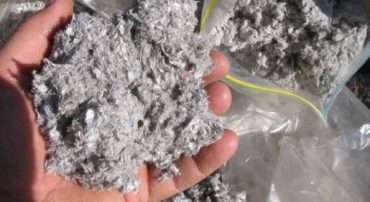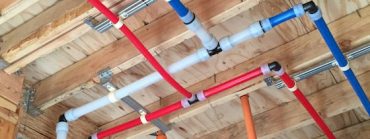
John Bleasby
Building materials of the past: where are they today?
Canadian Contractor‘They don’t build them like they used to!” (Maybe with good reason!)
Nostalgia just isn’t what it used to be, or is it? Are you someone who feels that many things today are slapped together without much thought to detail and workmanship? When it comes to residential construction, do you sigh and say, “Ah! Homes of the old days (like a century ago); now that’s how good houses were built!”
Others might disagree with you. “Hang on a second! Slapped together homes are nothing new. The shacks of a hundred years all fell down! Only the properly built homes of the past have survived; that’s why you can compare them with today’s homes.”
Truth is, there have been several advances in materials over the past 100 years, even the past 50 years. Let’s enter Canadian Contractor’s Time Machine, look back at some of these materials from the bygone era, and hear what some online commenters have to say. After all, everything changes for a reason!
Join the discussion!
Plaster versus Gypsum board
Prior to the 1950’s, most walls were covered in plaster over a wire mesh or wood lath. In certain challenging multi-curved situations or uber-high end installations they still are. However, gypsum board is ubiquitous today. That doesn’t mean people aren’t nostalgic. Some cite better sound insulating qualities of plaster. Others criticize gypsum board for its lack of structural integrity. “It’s pretty easy to put your hand through it (if you don’t hit a stud). Nails can’t be used to support anything with a decent load on it, the drywall just won’t hold up.”

Gypsum board versus plaster; some are still debating the point
Not everyone is a fan, however. “A nice plaster wall is probably nicer than drywall, but bad plaster was really bad.” In fact, gypsum board has made big strides in other areas. “Today’s drywall is far better than anything available even in the recent past. Non-organic drywall won’t even mold nowadays if it should get wet.”
What about wood framing?
Ever debated the size of wood framing of the past? “Older wood was larger and higher quality. The 2″x4″’s were true 2″x4″, not 1.5″ x 3.5″,” says one commenter. Not so, suggests another. “2X4 were never really 2X4,” they claim. “That measurement always referred to the size of the milled timber at the time it was cut from the logs, and not the dried lumber. In the good old days, the timber was dried outdoors. Even once kilns became common, everyone was different and the controls limited. Therefore each batch was different. Nowadays there is a universal standard, and when you buy a 2X4 you know for sure that it will be one and a half by three and a half. Still a pain for people like me that try to build and design things once a decade, but better than having mixed sizes.”
What about those species commonly available in the past?
“Older homes used woods that simply are not available any more (easily or cheaply, anyway). Clear all-heart redwood or cypress was commonly used in homes 100 years ago, and not just for trim…Sure, you could buy this today, but the cost would be very, very high. Consider yourself lucky if you get cabinets or closets lined with cedar or cypress, and that’s sure to be a custom feature as well.”
Foundation walls
We’ve come a long way, from terra cotta blocks and bricks to concrete masonry blocks and poured concrete. And with ICF becoming more and more popular, can one honestly say that the old days were better? This commenter thinks turning the clock back to brick foundation walls wouldn’t be so bad. “I’m going to give the nod to the older construction. Multi-wythe brick construction is more breathable, handles drainage better, and is (in my opinion) nicer looking than cinderblock construction.”

Asbestos insulation, anyone? “Aaah,… No thank you!”
Insulation
Asbestos insulation, which was so cheap and popular in the past, is thankfully banned in most countries. Today there is a wide range of choices, depending on the application and the budget. Of course, much of the product improvement has been driven by increased insulation requirements under the ever-evolving building codes, not just health standards. But still, shredded newspaper simply isn’t worth the trip back in time. Fibreglass or mineral fibre batts and spray foam are delivering superior results by a mile. “Poorly constructed new houses can have mold problems, but in general having insulation is much preferable to not having it.” Any arguments there?
Roofing for life? Does even make sense?
Nostalgic for slate or cedar shakes? Sure, they can last for decades, perhaps over 100 years in the case of slate. But is it worth it? “Although not as durable as slate, what penalty is there for using a technology [asphalt shingles] which works as well at a fraction of the cost, and causes very few (if any) headaches, financial or logistical to replace every 20 years? …Another way of looking at it: Does it make sense to buy a new Rolls Royce which will cost you a huge down payment and $2000 per month? Or to lease a new Mercedes every 2 years at $400 a month?

PEX is regarded by many to be a big step forward.
And there’s more….
Highly insulated windows and doors, lead-free paints, PEX plumbing, electrical circuit breakers; add them to the list of residential infrastructure that has made great strides over the past 100 years. Would you really want to go back?
For nostalgia fans, maybe this is the final word. “The answer to all of this has to do with, for lack of a better term: Soul…. With the passage of time, modern technologies and economics have conspired to undermine the cost of the ownership of quality, and change the values of what has been considered “luxury”, “premium”, and “economy”.”
What’s your opinion? Have we lost something from the past with the advent of new materials that is worth a comeback?
Follow John on Instagram and on Twitter for notifications about his latest posts

Advertisement
Print this page

Re the argument for asphalt shingles. I would like you to point me in the direction of 20 year asphalt shingles. Where we are they are lasting 12 years on a sunny exposure and never 20 for any part of the roof. I would always recommend a high quality steel roof over asphalt.
Judging by the massive piles of shingles in the landfill , it looks like the the shingles just make a brief stop on the roof on their way to the dump at high monetary and aggravation cost for all involved.
What an utter load of half truths. My house is 82 years old. Outside walls and roof built out of douglas fir planks. Not one sheet of ply and no tenth rate OSB junk. My foundation is cinder block construction, like heavy duty commercial and government buildings. No leaks in 82 years either. My walls and roof are ten times stronger than OSB and seven times stronger than veneer plywood. My floor beams of solid oak, so no joist braces needed. My walls are soundproof virtually. No carpet, just solid real beech hardwood floors. Replaced two single pane windows. Quality of craftsmanship is simply not found in regular new homes but ultra luxury mansions of the super rich. Once I updated to a more efficient furnace and added more plugs. My place is rock solid and efficient to run. The new homes in my neighborhood are starting to get mold with tight sealed homes, noisy inside heard everywhere, along with outside noise getting in, inside noise like stereo music getting out. Hearing the house creaking in high winds. Due to the heavy use of cheap thin plastic/wood, thin drywall. Which we get lots of in Calgary. Lets not forget the huge land space, like park two cars easily between my home and the next one, no open windows and shake hands. Backyard big enough to play hockey, volleyball or tennis and not interfere with patio set or fireplace. Unlike the new home with yards so small a weed eater is all that’s needed instead of a lawnmower. New used to mean improved, yet these days it blatantly doesn’t. It’s so obviously, companies no longer claim new, improved or better. They are just different. Made to be cheap, sold for vastly more, like 99% of everything in this disposable society of today. Just to feed humans worst disease.. Greed. Quality of life and what you can get for hours work is hundreds of times less. Plastic bag islands in the oceans. Will that’s the eighties to current times. Now 40 and under brats blaming previous generations, that never made this crap popular.